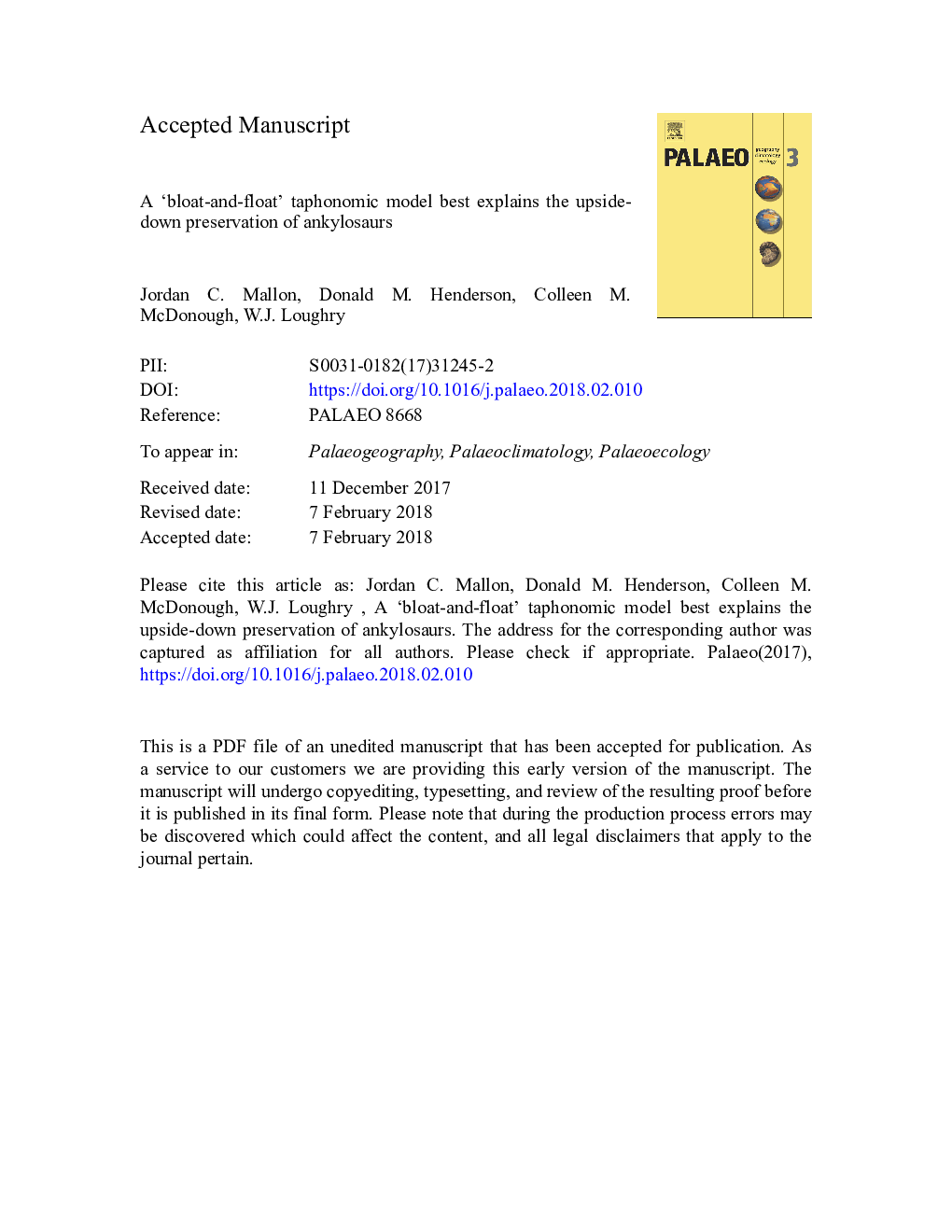| Article ID | Journal | Published Year | Pages | File Type |
|---|---|---|---|---|
| 8868259 | Palaeogeography, Palaeoclimatology, Palaeoecology | 2018 | 39 Pages |
Abstract
It is widely held that, within the Cretaceous fluvial and marine deposits of North America, ankylosaur remains are typically preserved upside-down; however, this anecdotal observation has yet to be substantiated. Likewise, none of the various hypotheses that purport to explain the frequent occurrence of overturned ankylosaurs has been tested either. This study is the first to apply quantitative and modeling approaches to address these shortcomings. We find strong statistical support for the dominance of upside-down occurrences, and favour a “bloat-and-float” model to account for them. According to this model, ankylosaur carcasses become reworked into fluvial or marine settings where they bloat and overturn prior to their final deposition. Differential floating behaviour between ankylosaurids and nodosaurids may have implications regarding the occurrence of the latter in marine depositional environments. This consideration of ankylosaur taphonomy might similarly help to explain the purported frequency of overturned glyptodonts, which share a similar bauplan with ankylosaurs.
Related Topics
Physical Sciences and Engineering
Earth and Planetary Sciences
Earth-Surface Processes
Authors
Jordan C. Mallon, Donald M. Henderson, Colleen M. McDonough, W.J. Loughry,
